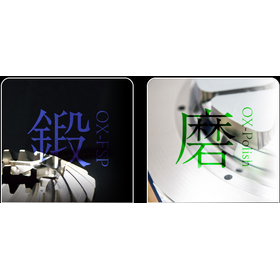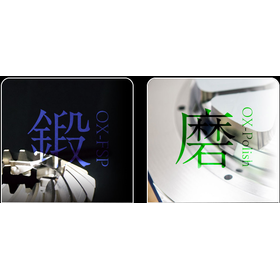Precision Shot Peening 'OX-FSP' Application Examples for Die Casting Molds
【Surface Treatment Technology】Significant reduction in the number of defects! Introducing examples of application to aluminum die-casting molds.
We applied the precision shot peening surface treatment technology "OX-FSP treatment" to aluminum die-cast molds for motorcycle step bars. Since we started the "OX-FSP treatment" at our company, we have significantly improved both the number and rate of defects. ■ Surface Treatment Process (1) "OX-FSP treatment": Nano-crystallization of the surface structure (2) Quenching and tempering (3) "OX-FSP treatment": Formation of dimples (improved release agent retention) ■ Start of Processing Started in March 2009 *Refer to the image ■ Types of Defects Molding defects due to voids, poor flow, air pockets, etc. *For more details, please download the PDF or feel free to contact us.
basic information
*For more details, please download the PDF or feel free to contact us. [Features of Oxy] - Capable of handling small lots (from 1 piece) to mass production - Permanent test machines for prototypes - Equipped with various inspection devices *We will visit anywhere in the country to provide an explanation.
Price information
We will submit the estimate as soon as possible.
Delivery Time
Applications/Examples of results
For more details, please download the PDF or feel free to contact us.
Detailed information
-
Examples of Application to Die-Casting Molds (1) Two-Wheel Motorcycle Clutch Housing Mold Life: Improved to 120% Product Defect Rate: Average 7-8% → About 1% (2) Two-Wheel Motorcycle Camshaft Cover Mold Life: Improved to 200% Product Defect Rate: Average about 10% → About 1-3%
-
Examples of Application to Gravity Molds (1) Company E - For Wheels Mold lifespan: Improved to 150% Product defect rate: Average 7-8% → Reduced to about 1-2% (2) For Company T - Hybrid Motor/Casing Mold lifespan: Improved to 150% Product defect rate: Average about 10% → Reduced to about 1-3% (3) For Two-Wheelers - Head Frame Mold lifespan: Improved to 120-140% Product defect rate: Average 20% → Reduced to 1-2%
catalog(1)
Download All CatalogsRecommended products
Distributors
OXISO Co., Ltd. has been honing its surface modification technology for engine parts and molds in Iwata City, Shizuoka Prefecture, where manufacturing technology has been accumulated for many years. Utilizing our accumulated technology and know-how, we understand the challenges faced by customers struggling with issues such as insufficient strength of parts and worsening defect rates on mass production lines. Like a doctor providing precise diagnoses and careful treatment, we identify the problems our customers face, investigate the causes, and offer optimal processing solutions.
























































